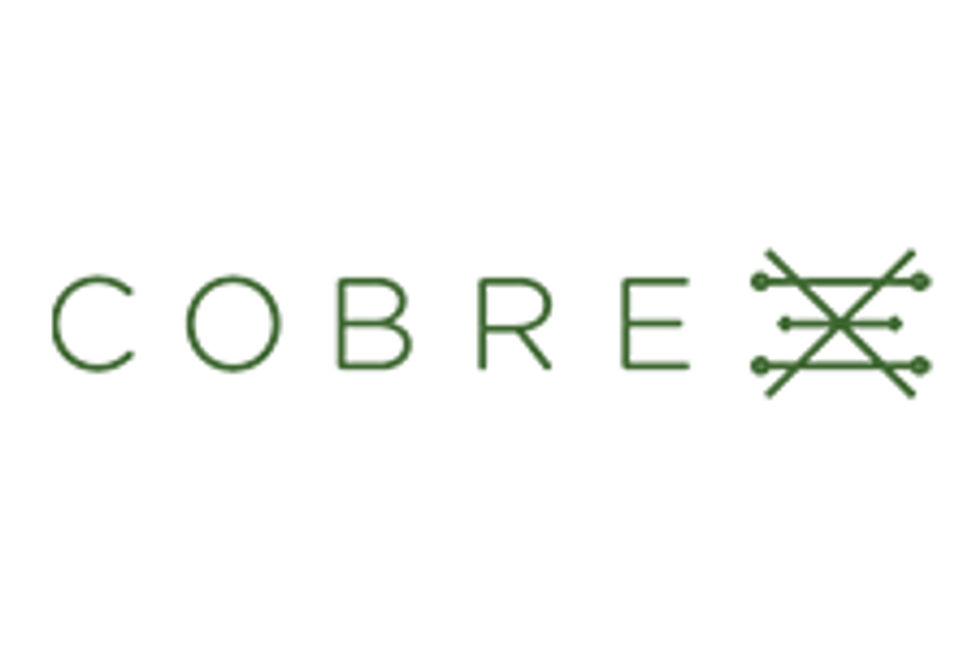Silver Trends 2018: Strong US Dollar Puts Pressure on Prices

What were the main silver trends of 2018? In this article we run through the year’s key supply, demand and price catalysts.
The price of silver has dropped almost 14 percent since January, despite a year where the markets were driven by geopolitical tensions.
Towards the end of September, the white metal fell to its lowest level when it traded just under US$14 per ounce, although prices have regained some momentum since then.
As the year comes to a close, the Investing News Network (INN) is looking back at the main silver trends this year, from the impact of the US Federal Reserve’s interest rate hikes to widespread geopolitical uncertainty and the rise of the US dollar.
Read on to learn what happened in the silver market in 2018, from the ongoing issues that weighed on the precious metal to how analysts thought the market performed throughout each quarter this year.
Silver trends Q1: Geopolitical concerns keep prices steady
Silver made small gains in Q1 2018, rising 0.21 percent and experiencing several ups and downs.
A weaker US dollar and inflation supported silver over the period. Increased interest rates also drove silver prices during the first quarter, as the Fed and rate hikes took on a major role toward the end of Q1.
The white metal fell to its lowest point of the quarter on March 20, when it traded at US$16.14. The dip came as the US dollar strengthened ahead of an interest rate hike from the Fed. Higher rates tend to curb the appeal of holding non-yielding assets such as silver.
As forecast towards the end of Q3 last year, three interest hikes were proposed for this year, the first of which took place on March 21. Like gold, silver faced a fall before the Fed implemented the increase, but then experienced gains on the back of the announcement.
Geopolitical uncertainty and concerns were also top of mind during the first quarter of 2018.
In terms of political uncertainty, analysts at FocusEconomics stated, “[t]he recent upturn in prices came as US President Trump decided to impose hefty tariffs on imported steel and aluminum, shaking up markets and intensifying fears of a full-blown trade war. This fueled more safe-haven demand for silver.”
Brien Lundin, editor at Gold Newsletter, also addressed the tariffs, stating, “I think they’re terrible. They’re a terrible idea. I think it creates uncertainty, which creates volatility in the market.” Volatility in the market often brings investors to safe havens such as precious metals.
During the first quarter, silver traded between US$16.14 and US$17.54.
Silver trends Q2: Investor interest wanes
The price of silver fell almost 2 percent in the second quarter, dipping below the US$17 safety benchmark towards the end of April.
A strong US dollar, stagnant investor demand and silver’s inability to attract safe-haven demand stifled the white metal in the second quarter. While gains were made on the back of geopolitical concerns at the beginning of Q2, investors eventually lost interest in holding the precious metal in their portfolios during market uncertainty.
Analysts at FocusEconomics stated at the time, “[d]ownward price pressures stem from a strengthening of the dollar, which reduce[s] safe-haven inflows into silver and dampens prices.”
Similarly, Brent Cook of Exploration Insights told INN, “[w]hat we are seeing is a serious lack of large investor and institutional interest in the metals and mining sector. In my opinion, the major US and Canadian markets are topping, emerging markets are falling and all markets are being whipsawed by a petulant vindictive man-child with no real plan or interest in factual data.”
In addition to waning interest from investors, the Fed increased interest rates for the second time in 2018 during Q2, negatively impacting silver.
Byron King of Agora Financial told INN, “the dollar strengthened due to the US Fed increasing interest rates, and the Fed talking heads issuing guidance to expect more rate increases at regular intervals. Plus, global markets appear to perceive strong economic growth in the US, leading to a bid up for dollars.”
On a positive note, industrial demand for silver, led by photovoltaic growth stemming from the increased use of solar panels, was a catalyst for silver during the second quarter of the year.
“The use of silver in solar photovoltaic panels has grown rapidly. Solid demand from the semi-conductor market, lifted by a strong global economy, has led to higher silver off take in electrical and electronics applications. Global supply is continuing to tighten due to lower mine supply and declining global silver scrap supply, which will exert upward pressure on prices,” said FocusEconomics in a report.
Speaking with INN, Nihad Ahmed, economist at FocusEconomics, said, “rising demand for silver has also emanated from the high-tech auto industry. Tightening global supply due to lower mining output and declining global silver scrap supply have also exerted upward pressure on prices.”
During this time, many analysts were in agreement that silver would suffer much the same fate in the third quarter. The white metal traded between US$16.14 and US$17.54 during Q2.
Silver trends Q3: Prices can’t match a strong US dollar
The price of silver fell by nearly 9 percent in the third quarter, dipping below the US$16 level towards the middle of July, where it would stay for the remainder of Q3. During this quarter, the white metal also experienced a two-and-a-half-year low in mid-September when it fell below US$14.
A strong US dollar and continued decline in investor demand were the main catalysts behind the white metal’s downfall throughout the quarter. Additionally, another Fed hike took place on September 26.
As a basket of geopolitical concerns presented themselves in Q3, investors continued their Q2 trend of opting to turn to the greenback as a safe haven against these concerns rather than to precious metals.
The geopolitical setting during the third quarter created a market in which investors were trying to release themselves from the silver that they were holding.
David Morgan of the Morgan Report spoke to INN at the time and noted that historically speaking, most investors who purchase the white metal typically buy it and hold it, as opposed to buying and selling back. However, he explained that this pattern changed during the third quarter.
He told INN, “I talked to one [silver] dealer that I know very well, and he said for the first time in years they had a few months where they actually purchased back more than they sold.” He explained, “that’s normally when you get capitulation, where people give up — that’s usually the bottom.”
Additionally, the US experienced a thriving economy during this quarter, leaving a negative effect on silver. “Robust economic growth in the United States is driving the Federal Reserve to tighten its monetary policy,” Ricard Torné, lead economist at FocusEconomics, told INN.
“As a result, US yields are rising, shifting capital flows from safe-haven assets,” he added.
Finally, a third Fed interest rate hike once again affected the silver price towards the end of Q3.
The announcement put an end to the three-week high that the white metal experienced prior to the announcement, keeping prices in the US$14 range.
The markets also reacted to the Fed’s guidance regarding future interest rates. At the time, the Fed remained on track to raise rates once more in December and three times in 2019.
At the end of Q3, many market watchers believed that silver would find its footing towards the end of the year. Silver traded between US$14 and US$16.08 in Q3.
Silver trends Q4: US$14 per ounce and holding
As with previous quarters, the silver price in Q4 experienced some ups and down, but this time around it didn’t manage to break free of the US$14 range. While the white metal came close to US$15, it was never able to break that barrier.
Many of the trends that affected the white metal in previous quarters maintained their grip throughout Q4. A strong US dollar, paired with little to no support from investors, caused the precious metal to dip close to 3 percent during the fourth quarter.
Kai Hoffmann, CEO of Oreninc, addressed the strong US dollar vs. precious metals performance in the quarter, telling INN, “the US dollar is currently the safe-haven investment for investors worldwide. As long as the US dollar is strong, precious metals won’t be of much interest to the general public.”
In terms of lack of investor support, Robert Carrington, CEO of Newrange Gold (TSXV:NRG), noted, “the hard swings to the up and down side continued to erode investor confidence.”
Morgan agreed with Carrington’s sentiment, telling INN, “there’s been a lot of people that have given up on the silver market, and that is verified by the amount of retail sales in silver.”
The anticipation of a fourth rate hike in December was also a key factor driving prices during this period.
“[T]he Fed remains on track for a widely-expected rate hike in December, as per its Open Market Committee statement released on 8 November, which would support a dollar,” stated analysts at FocusEconomics.
As Brian Leni, founder of Junior Stock Review, told INN, “I believe the aggressive march upward in interest rates is at the heart of the correction and tepid narrative that is surrounding the broader market.”
The month of December, particularly following the final Fed hike of the year, should give some insight into what to expect from the silver for 2019.
The white metal has been trading between US$14 and US$14.72 during the quarter.
For silver market predictions, stay tuned for our silver analyst and company outlook. You can also read the list of our most popular silver news stories of 2018 by clicking here.
Don’t forget to follow us @INN_Resource for real-time news updates!
Securities Disclosure: I, Nicole Rashotte, hold no direct investment interest in any company mentioned in this article.
Editorial Disclosure: Newrange Gold is a client of the Investing News Network. This article is not paid-for content.
The Investing News Network does not guarantee the accuracy or thoroughness of the information reported in the interviews it conducts. The opinions expressed in these interviews do not reflect the opinions of the Investing News Network and do not constitute investment advice. All readers are encouraged to perform their own due diligence.



